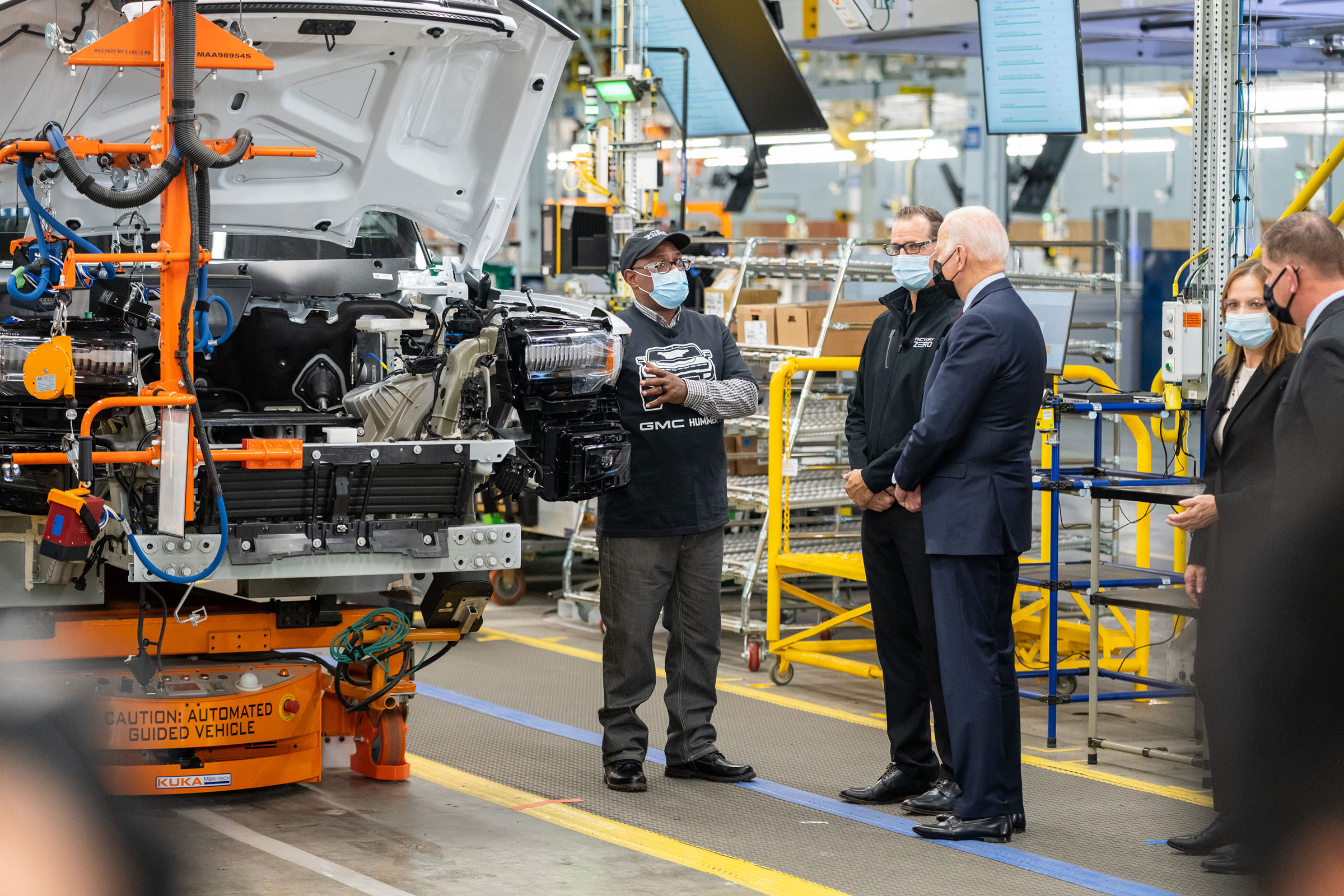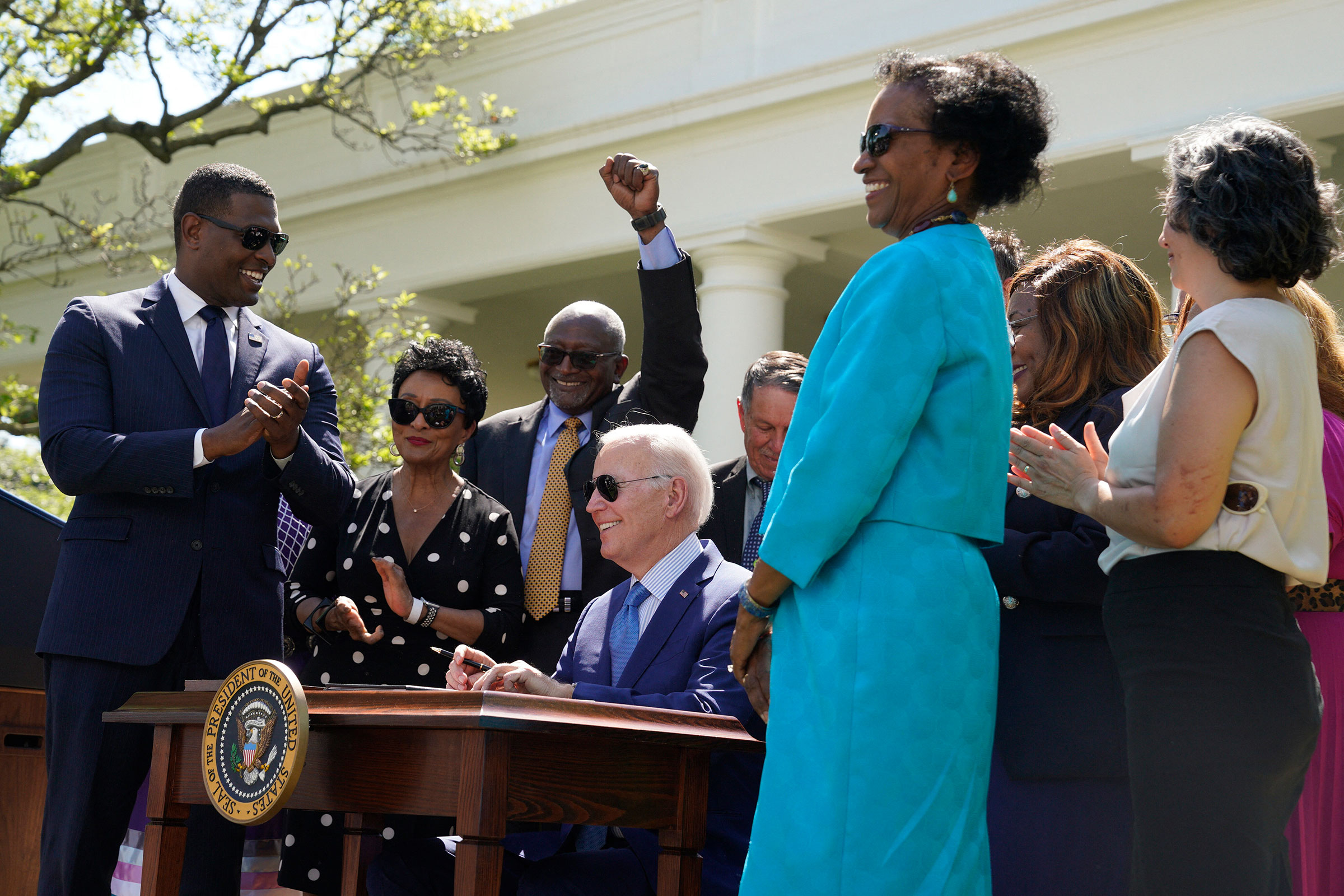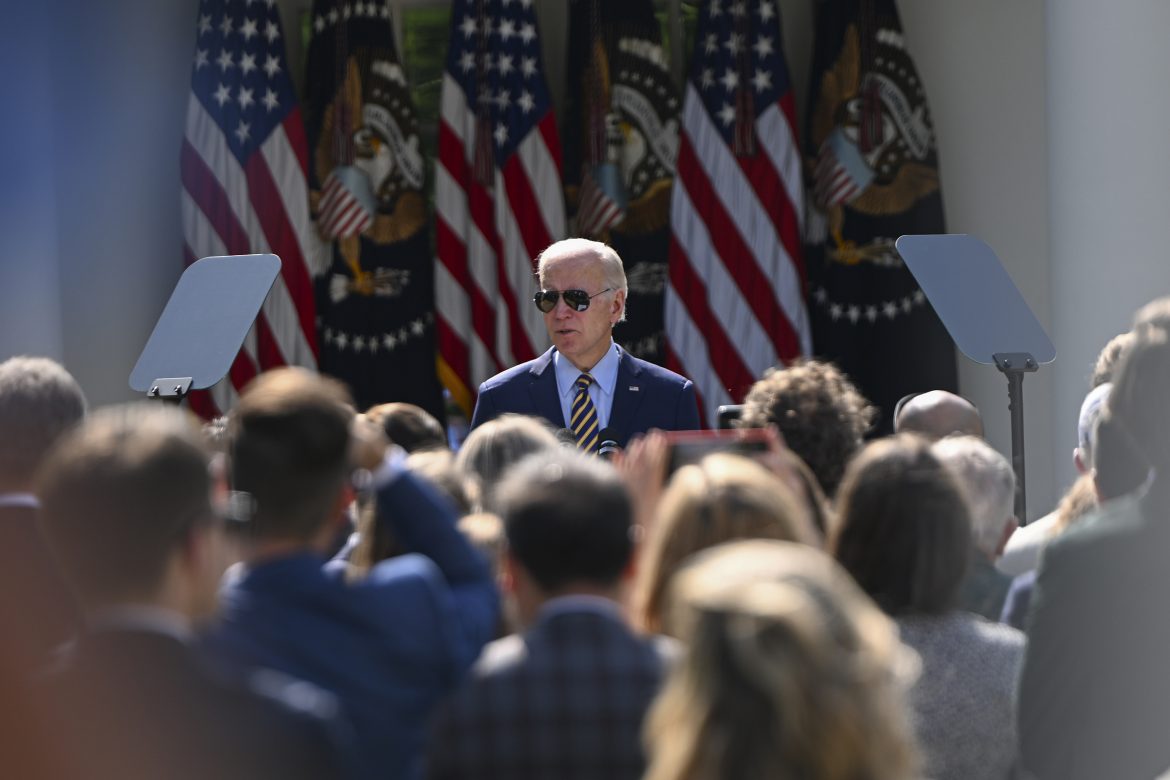The strongest climate champion ever has earned a second term to finish the job.
In little more than two years, President Joe Biden has turned the United States from a baleful laggard into a respected leader in the fight to avert a climate catastrophe. To build on those gains, and not retreat from them, the country needs a second Biden term. The stakes are too high for anything less.
From day one of his presidency, Biden has worked to advance the strongest climate action in U.S. history. As a result, the country is positioned to cut greenhouse gas emissions by nearly half. Clean energy investment is driving a heartland manufacturing renaissance. And the country is more energy secure.
None of this progress was inevitable.
When Biden took office in 2021, U.S. climate policy was in shambles, the ruinous legacy of a reckless charlatan whose churlish climate denialism and fealty to fossil fuels set the country back a generation or more in the critical mission to confront the existential challenge of our time.
Biden responded with a clear vision and concerted statesmanship to deliver a climate triple play: strategic climate and clean energy investment; new rules to cut carbon pollution from cars and trucks; and new standards to cut emissions from power plants that burn coal and gas.
Taken together, and done right, these measures will position the country to cut the greenhouse gas emissions that are driving the climate crisis by 45 percent below 2005 levels by 2030. That’s within striking distance of Biden’s target of 50–52 percent reductions. He’s earned the chance to finish the job.
Biden needs a second term to finalize and implement the new rules to clean up our cars, trucks, and dirty power plants, and to wisely deploy the strategic climate and clean energy investments—$370 billion over 10 years—in the Inflation Reduction Act he signed into law last August.
Since then, companies have announced more than $83 billion in clean energy investment, mostly for new factories to make solar panels, wind turbines, electric vehicles, advanced batteries, and other building blocks of the clean energy economy.

President Biden tours the General Motors’ Factory ZERO facility in Detroit. Hayward Miller (left) explains electrical testing and quality checks. (Adam Schultz/White House)
That’s bringing more than 63,000 clean energy jobs to Arizona, Georgia, Michigan, Ohio, South Carolina, and 30 other states, both red and blue. It’s strengthening the domestic supply chain for key components of a modern economy. And it’s increasing the domestic alternatives to the fossil fuels that pad the war chests of belligerent petro-states like Russia.
In a second term, Biden can help create a modern federal review and approval process that supports the clean energy build-out at the pace and scale required to confront the climate crisis, without gutting needed safeguards or dimming the voices of frontline communities.
Biden understands that people of color and low-income communities pay the highest price for fossil fuel hazard and harm. He talked about it on the campaign trail. And he’s working to advance environmental justice and make sure that 40 percent of the benefits of federal climate and clean energy investments go to underserved communities.
In a second term, Biden must make sure his Justice40 Initiative bears fruit and is even expanded. And he must stand strong against pressures to concentrate a new generation of industrial hazard and environmental harm on the very communities that are already paying the highest price for the misbegotten policies of the past.

President Biden signs an executive order to advance environmental justice on April 21, 2023. (Yuri Gripas/Sipa via Associated Press)
Biden also must dramatically increase climate assistance to vulnerable countries. This spring, the administration contributed $1 billion to the global Green Climate Fund, a lifeline for vulnerable communities strapped for the resources to invest in clean energy and climate resilience.
That still leaves the United States $1 billion short on its 2014 pledge to provide $3 billion for this fund. Biden must make good on that promise.
He must then work with U.S. entities like the U.S. International Development Finance Corporation and the Export-Import Bank of the United States, as well as multilateral development banks like the World Bank and the International Monetary Fund, to raise the bar on desperately needed assistance for the 3 billion people worldwide struggling to pay a price they can’t afford for a climate crisis they didn’t cause.
Biden’s climate record isn’t without blemish. Approving the Willow oil project and signing off on the Mountain Valley Pipeline were mistakes, and we’ve said so. We’ll continue to oppose projects—including those that would increase the public lands and federal ocean waters exposed to oil and gas drilling—that lock in decades more of dependence on fossil fuels.
Biden, though, understands the stakes in the climate crisis. He’s been more effective, by far, than any of his predecessors in confronting it.

Workers pass the stern of the unfinished 260-foot-long Eco Edison ship in Terrebonne Parish, Louisiana on April 3, 2023. The ship will serve as floating housing for U.S. offshore wind technicians and a warehouse for their tools as they operate and maintain wind farms. (Ted Jackson/Associated Press)
And what of his opponents? Republicans have fought Biden’s climate leadership tooth, nail, and hair; not one—in the House or the Senate—supported the climate and clean energy incentives in the Inflation Reduction Act. Biden blocked House extremists from gutting those provisions in the recent debt ceiling talks.
A GOP presidency would throw the country’s hard-won climate gains into hard reverse, condemning our children to cascading crises of climate, nature, and inequity. We cannot allow that to happen.
Biden has made climate action a centerpiece of his presidency, creating a world of progress, possibility, and promise that was scarcely imaginable before he took office. He has positioned the United States to achieve its critical climate goals, to urge other countries to do the same, and to provide desperately needed climate aid to those who need it most.
None of that will happen if Biden’s opponent wins.
For everyone who grasps the stakes in this existential fight, Joe Biden is the clear choice for 2024. We’re counting on him to take the climate fight to the next level in a second term—and he can count on our support.


